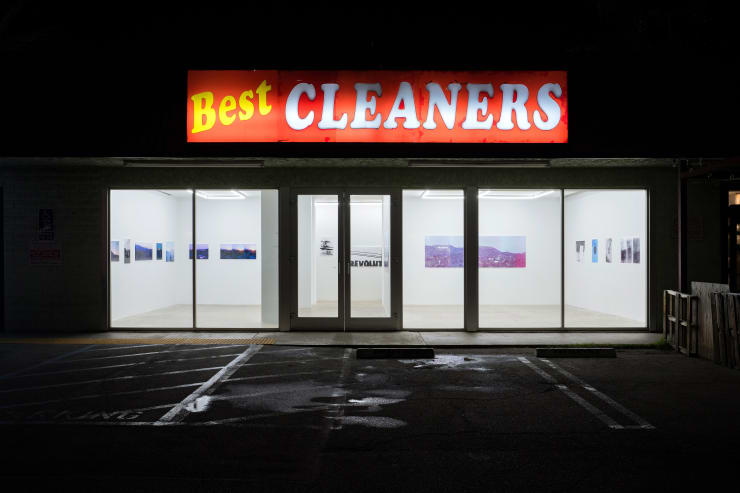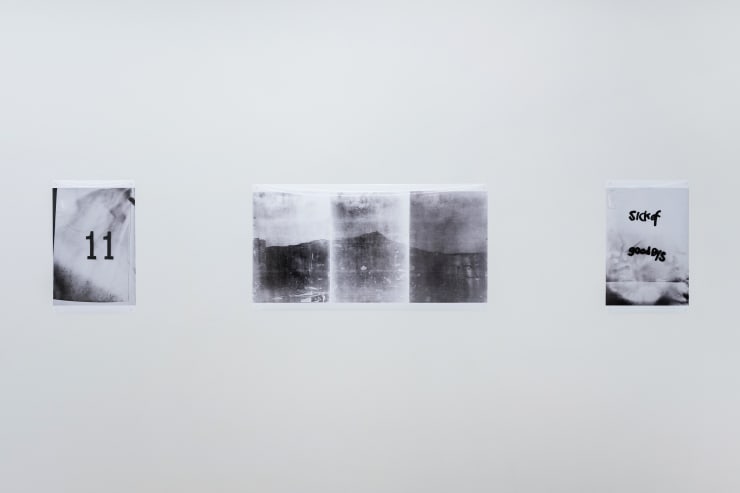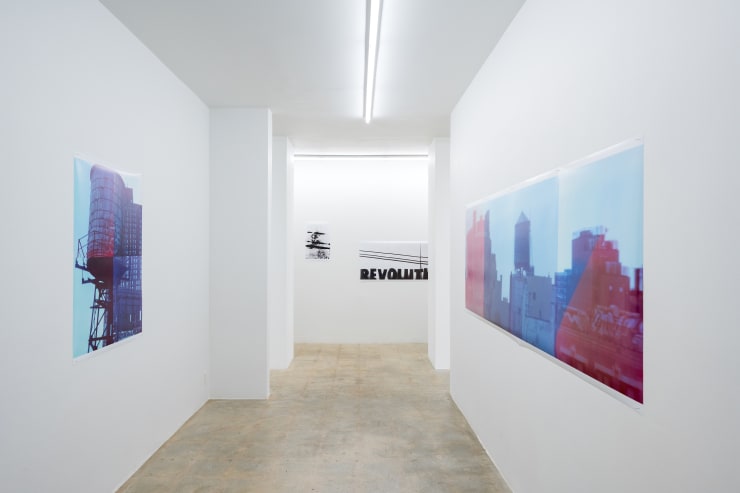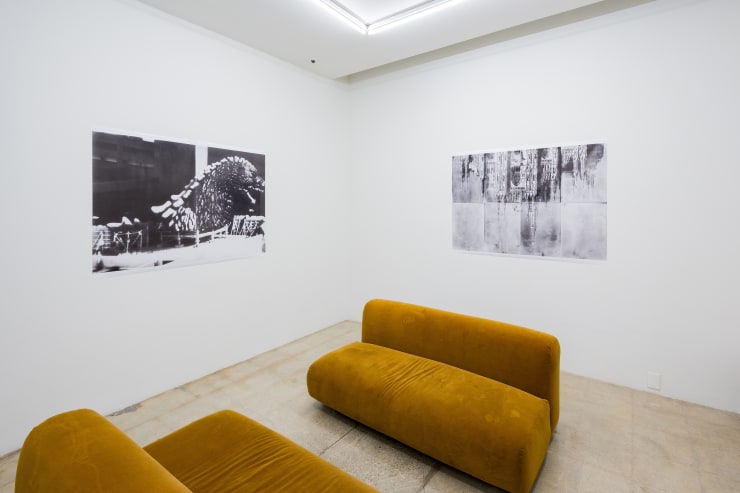TAKASHI HOMMA : REVOLUTION No.9 / Camera Obscura Studies
Nonaka-Hill is pleased to present TAKASHI HOMMA: REVOLUTION No.9 / Camera Obscura Studies , the Japanese artist’s second solo exhibition with the gallery. The artist will stage a musical performance at the opening on November 11th, 6 – 8pm. The exhibition is on view through January 11, 2024. The gallery will be closed for the holidays from December 23rd, reopening on January 3rd, 2024.
Working mostly in color photographic series and photo-books since the mid-1990s, Takashi Homma’s documentary images almost always also feel poetic. The artist has recorded such diverse subjects as impassive youth in the streets, freshly plucked mushroom specimen, undulating ocean waves, iconic architecture, deer blood tracks in snowy forests, amongst many others.
Over the past several years, Takashi Homma's work has pivoted to include epiphenomenal visages produced by camera obscura rendering black and white photography and surprising color images. Working in unseen rooms of unseen buildings in cities around the world, the artist blacks out windows and eliminates light leaks, leaving only a small “pinhole” through which outside light steams in, casting the building’s vista onto receptive photosensitive film as an upside down and inverted image. Drawn to both iconic and ubiquitous urban sites, Homma uses “city as a device to photograph itself”. As such, chance-operated improvisation embeds the visual textures in The Narcissistic City series with a sense of timelessness and mystery.
Also featured in the exhibition are selected works from Homma’s "Thirty-Six Views of Mount Fuji" series based on the famed ukiyo-e artist Katsushika Hokusai's "Fugaku Sanjurokkei (Thirty-Six Views of Mount Fuji)" applying the same dark room to metaprocess while circumnavigating the world heritage site.
As discussed by Vilém Flusser, the camera obscura metaphor was fated to give way to a new construct, that of negative/positive, and possibly the uprighted reality and the inverted truth. This construct is the paradoxical logic of the photographic camera: its cultural weight notably increased in the form of photographic images, but the device itself descended into the obscurity of the 'blackbox.'. Homma may be employing this metaphor to the indexical trace and cultural shift that is still hidden within the apparatus.
With the exhibition title "Revolution 9", Homma unites his “Narcisstic City” and "Thirty-Six Views of Mount Fuji" as an homage to the famous song of the same name by The Beatles, who recorded the track as a collage based on a myriad of sound sources and the cadence of repetition.
Born in Tokyo in 1962, Takashi Homma began his professional career in 1984, working as an inhouse photographer for a Tokyo advertising agency. In the early 1990s, Homma worked in London as a photographer for i-D magazine, world renowned for its keen and enduring eye on youth culture and the diversity of human expression, often captured through "street photography". Homma returned to Japan and, in the following years, he photographed Japan as it really exists, chronicled in his 1998 artist book, Tokyo Suburbia (Korinsha Press, Tokyo), for which he was awarded the prestigious Kimura Ihei Commemorative Photography Award in 1999. A cursory review of the spectrum of photography from Japan might give the impression that two polar positions have dominated the nation's photographic discourse: a perceived mandate to use the camera's inherent capability to document objective truth versus a more expressive exploration of the photographic medium's potential. Homma's practice offers a middle ground, between a documentary and expression, a poetic view of our world as it is. Homma has produced an extraordinary range of photo books, an artform wherein he has achieved great distinction.



























